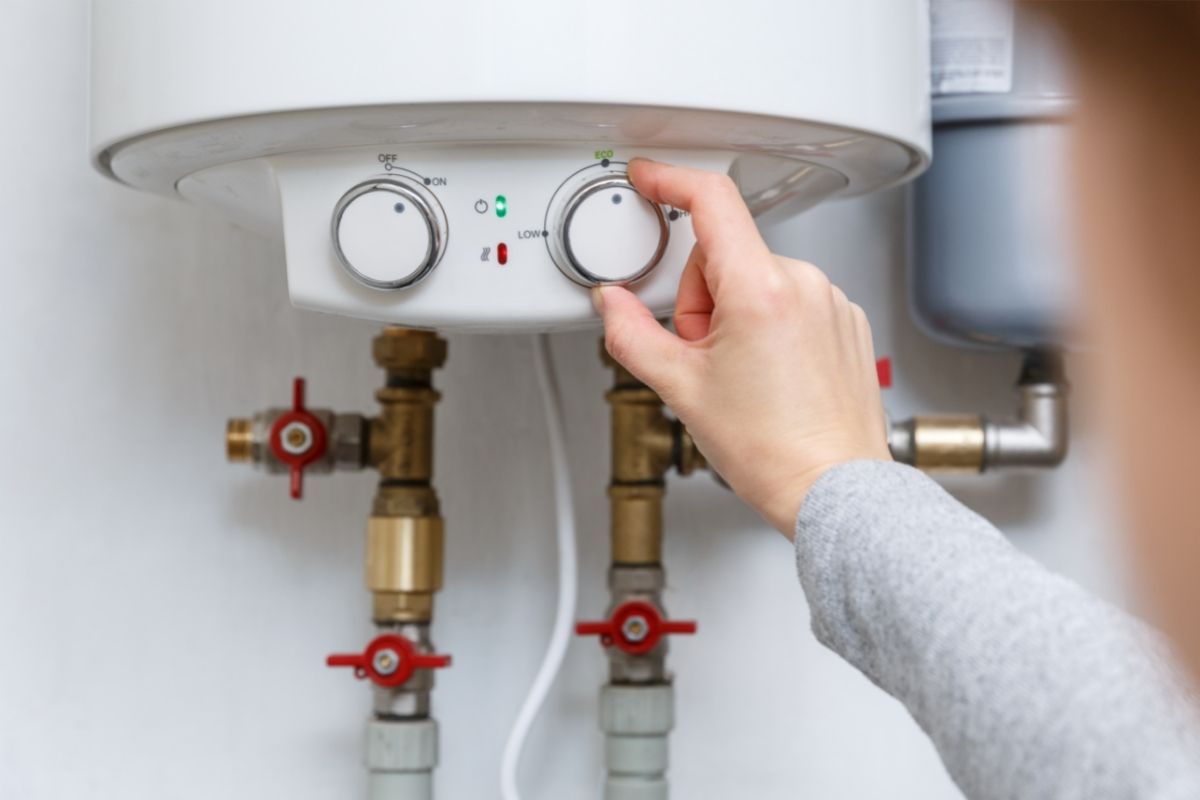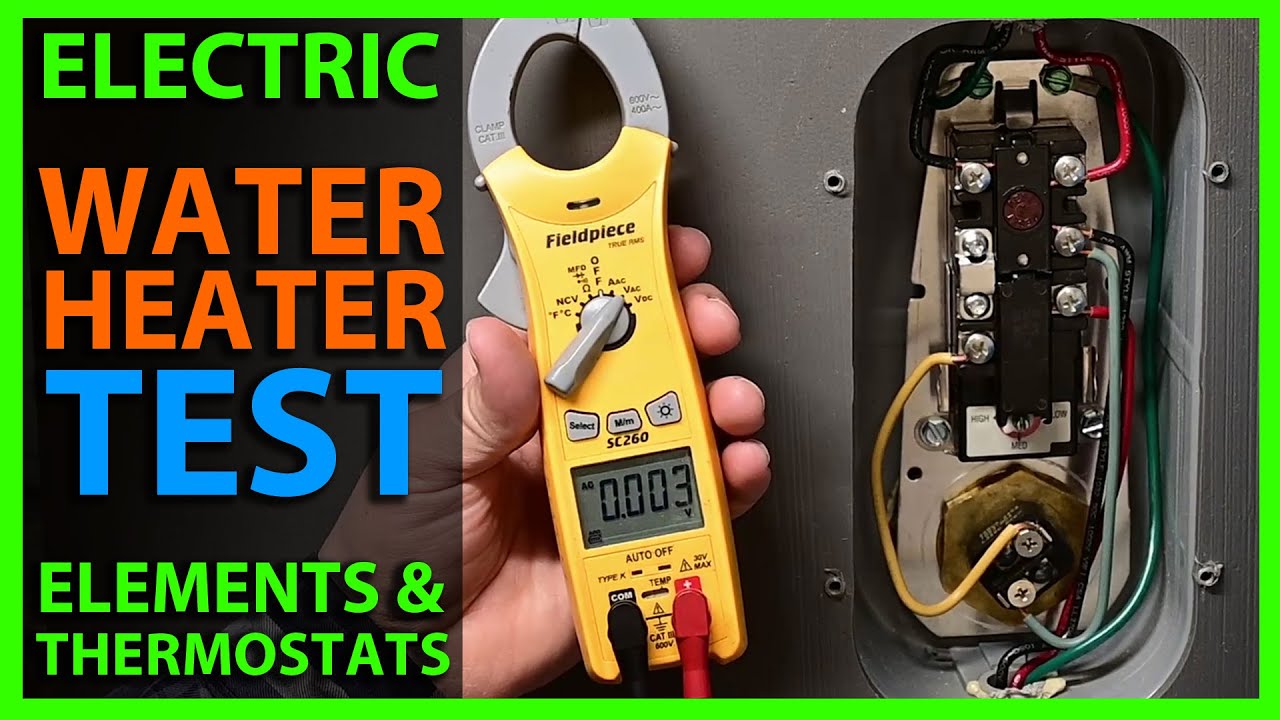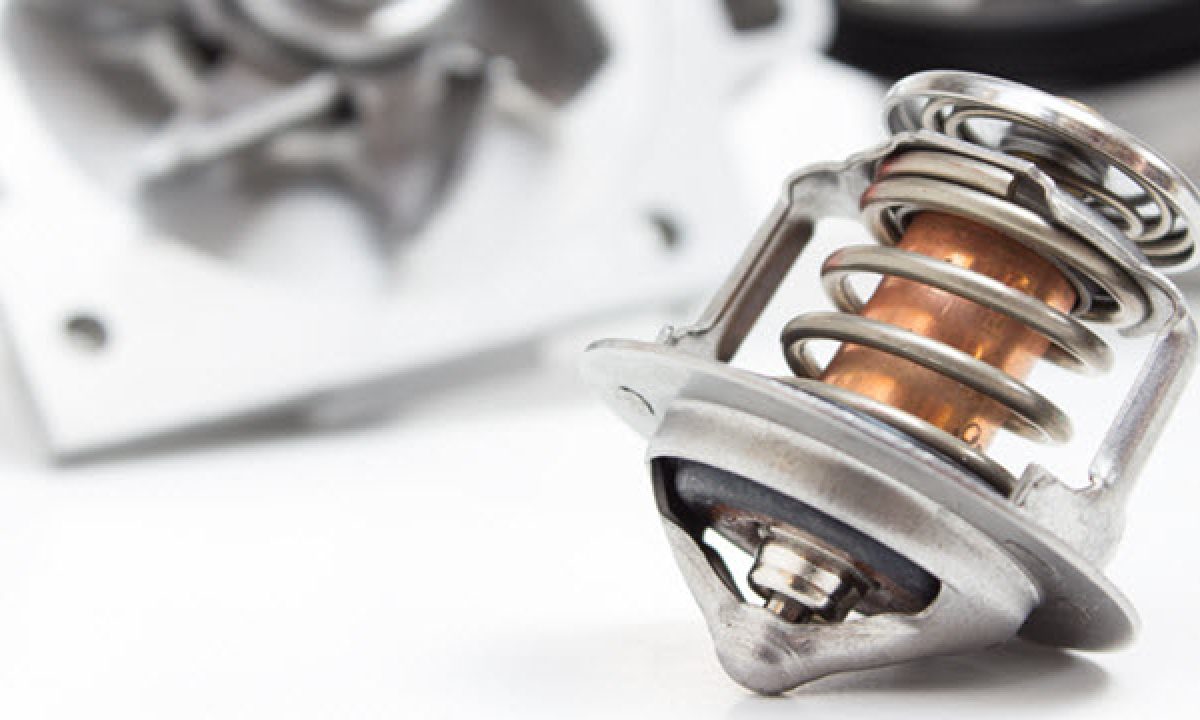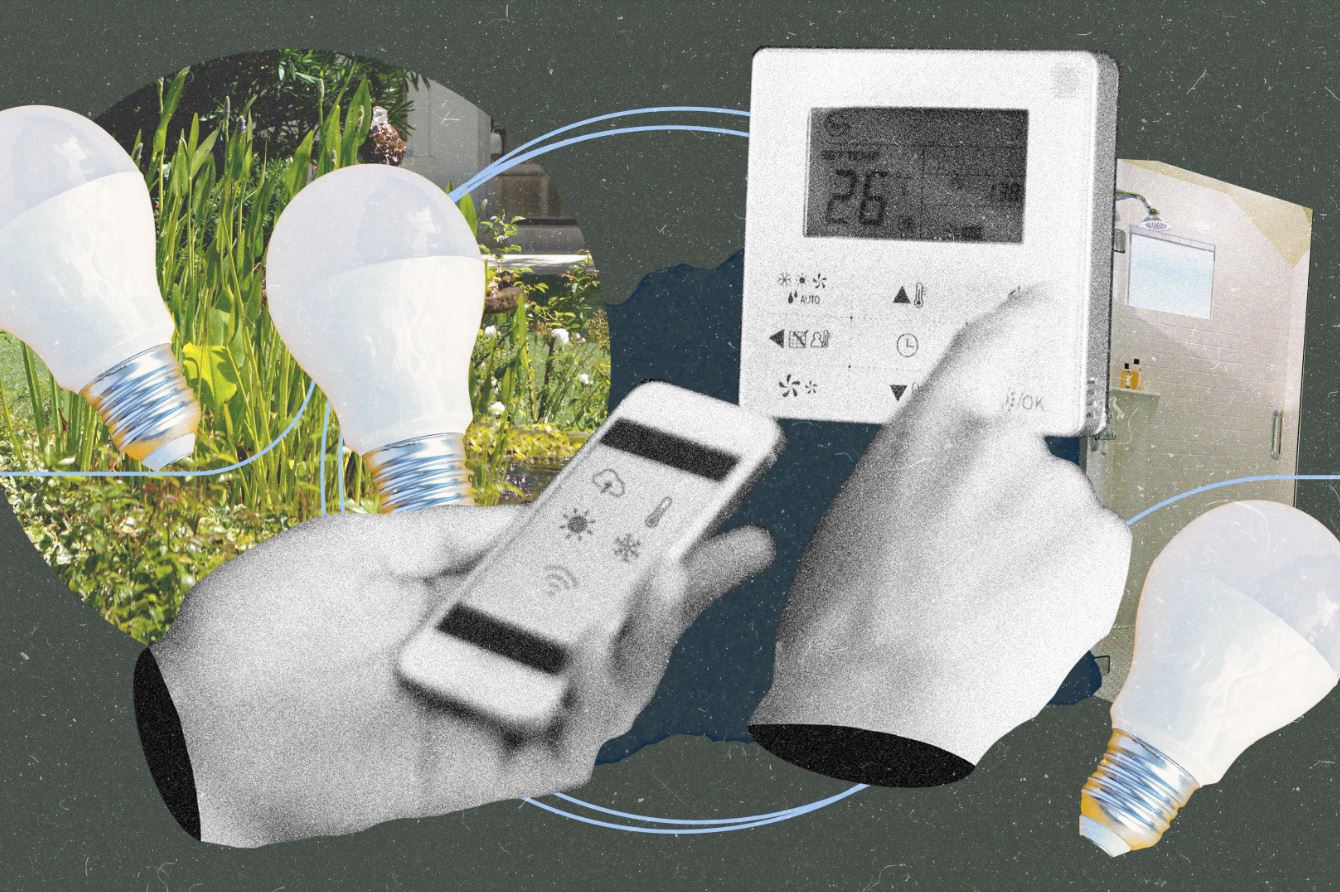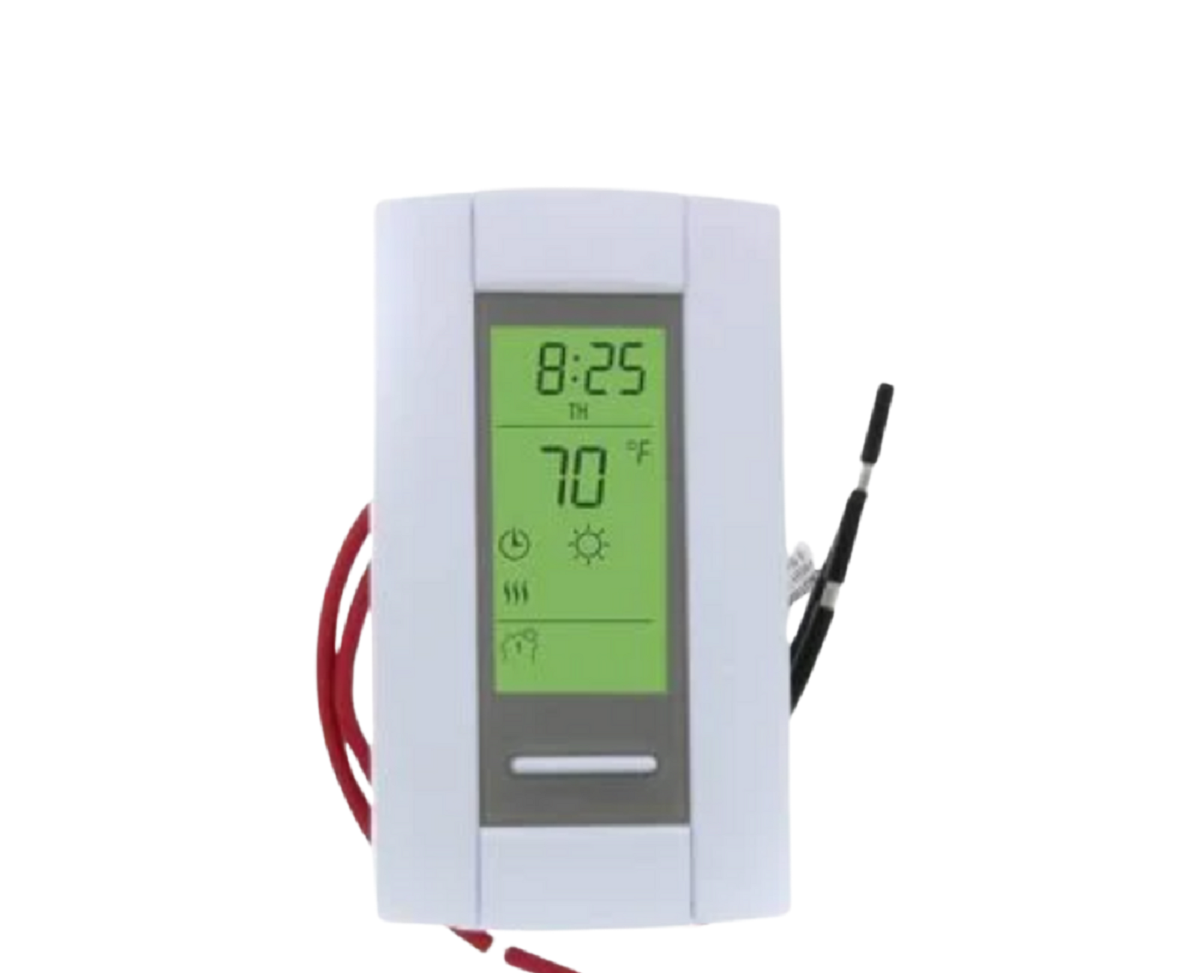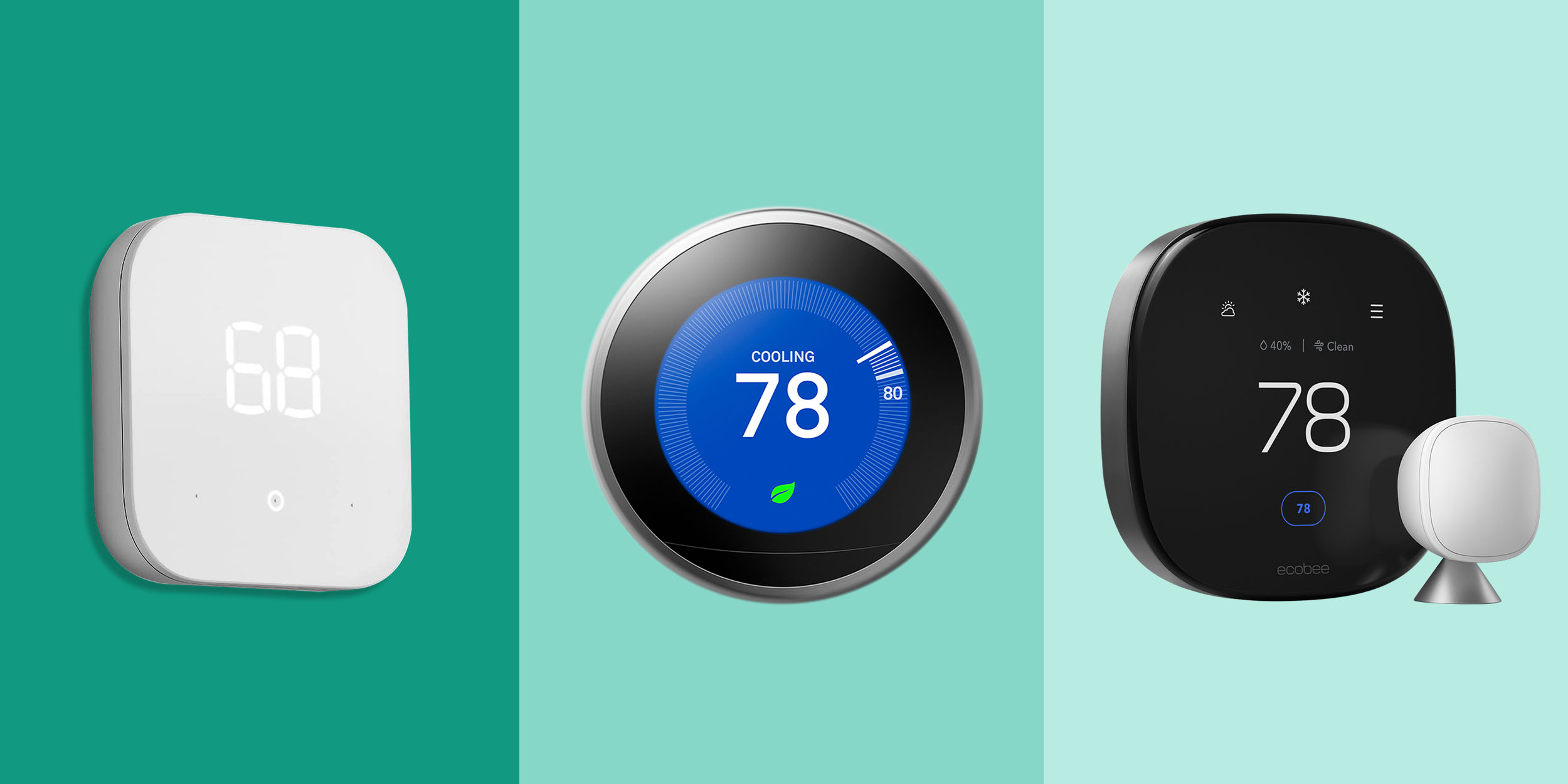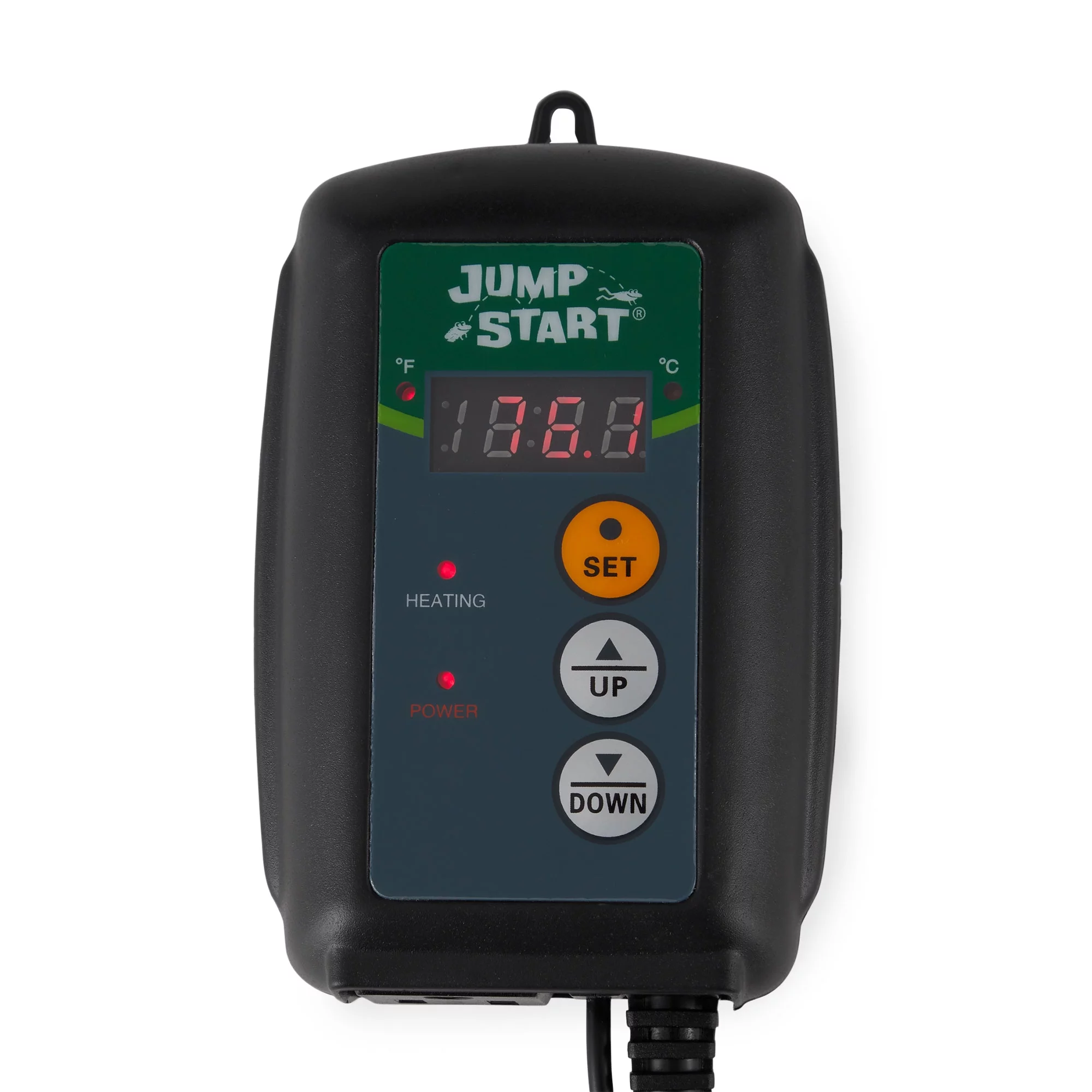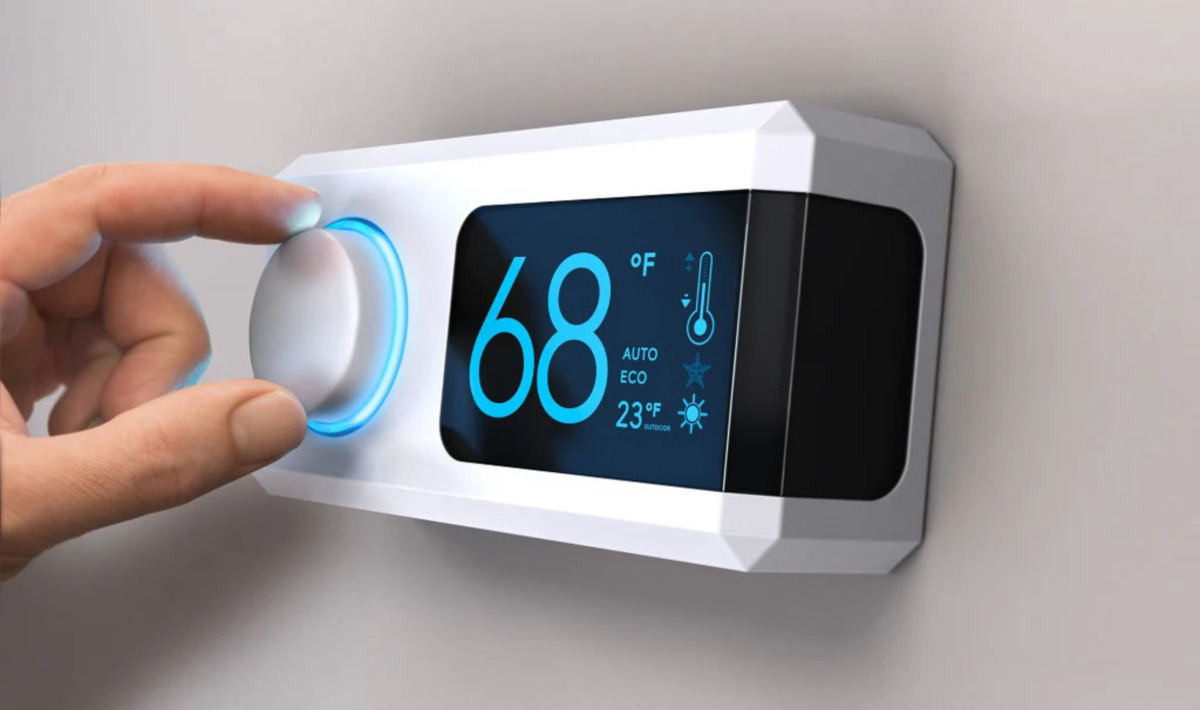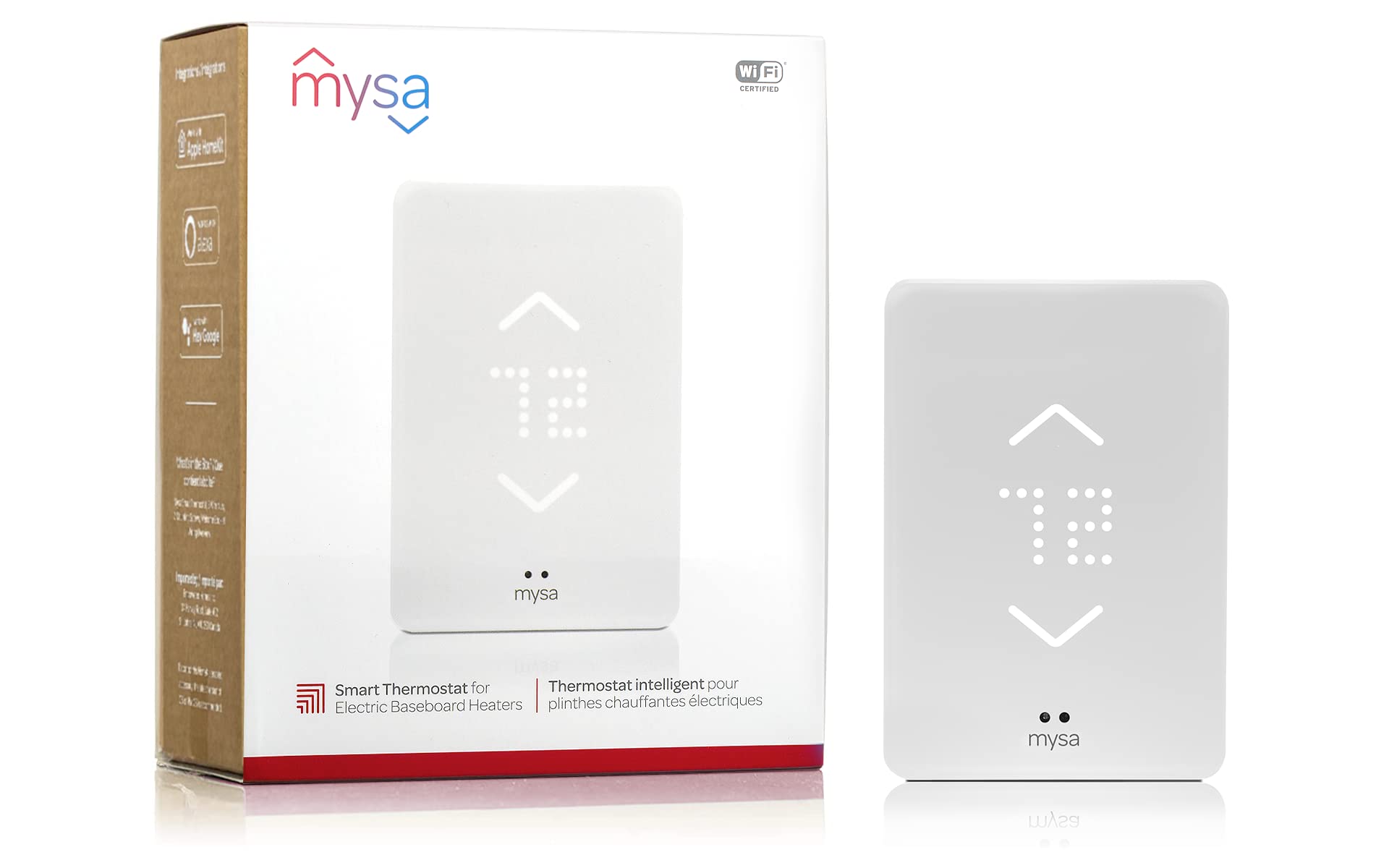Introduction
Welcome to the world of water heaters! Whether you’re a homeowner or simply curious about how these essential appliances work, understanding the role of a water heater thermostat is key. The thermostat is a crucial component that ensures your water stays at the desired temperature without wasting energy. In this article, we’ll dive into the fascinating world of water heater thermostats, explaining how they work and the important features they offer.
A water heater thermostat serves as the control center for regulating the temperature of the water in your heater. It allows you to set the desired temperature, ensuring that your showers are warm and enjoyable, while preventing scalding or excessively hot water from being dispensed. This small but mighty device works in conjunction with other components of the water heater to deliver hot water on demand.
Understanding the inner workings of a water heater thermostat helps you make informed decisions about temperature adjustments, troubleshooting issues, and ensuring the overall efficiency and safety of your water heater. So, let’s take a closer look at how a water heater thermostat functions and what key components make it work.
But before we delve into the details, it’s essential to note that water heater thermostats can vary in design and functionality depending on the type of water heater you have. Whether you have an electric, gas, or tankless water heater, the thermostat plays a crucial role in maintaining the desired water temperature.
Now, let’s embark on this journey to unravel the secrets behind the operation of water heater thermostats and gain a deeper understanding of this critical component.
What is a Water Heater Thermostat?
A water heater thermostat is a device that controls and regulates the temperature of the water in your water heater. It is typically located on the front of the water heater and allows you to adjust the temperature settings to your desired level. The thermostat ensures that the water remains at a consistent temperature, providing you with hot water when you need it.
Water heater thermostats are designed to monitor and maintain the water temperature at a safe and comfortable level. They are equipped with temperature sensors that detect the current temperature of the water in the tank. When the temperature drops below the set point, the thermostat activates the heating element or burner to raise the water temperature back to the desired level.
It’s important to note that there are two types of thermostats commonly used in water heaters: single-element and dual-element thermostats. Single-element thermostats are primarily found in older or smaller electric water heaters, while dual-element thermostats are more commonly used in larger electric water heaters.
Single-element thermostats have one temperature control for the entire tank, while dual-element thermostats have separate controls for the upper and lower heating elements. This design allows for more precise temperature adjustments and improved energy efficiency, as it allows you to heat only the amount of water you need.
In addition to controlling the temperature, water heater thermostats also incorporate safety features to prevent overheating or scalding. They are equipped with high-limit switches that automatically shut off the heating elements or burner if the water temperature exceeds a certain threshold. This helps protect against potential hazards and ensures the safe operation of the water heater.
Overall, a water heater thermostat is a crucial component that allows you to control and maintain the desired water temperature in your water heater. It ensures that you have a reliable source of hot water while providing safety features to prevent any potential issues. By understanding how a water heater thermostat works, you can make informed temperature adjustments and ensure the efficient and safe operation of your water heater.
How Does a Water Heater Thermostat Work?
A water heater thermostat works by constantly monitoring the temperature of the water in the tank and activating the heating element or burner when necessary to maintain the desired temperature. Let’s take a closer look at the step-by-step process of how a water heater thermostat operates:
1. Temperature Sensing: The thermostat is equipped with a temperature sensor or probe that is in contact with the water inside the tank. This sensor detects the current temperature of the water and sends the information to the thermostat.
2. Temperature Comparison: The thermostat compares the measured temperature with the desired temperature set by the user. If the current water temperature is lower than the set point, the thermostat initiates the heating process. However, if the temperature is within the desired range, the thermostat remains idle.
3. Activating the Heating Element or Burner: Once the thermostat determines that the water needs to be heated, it sends a signal to the heating element or burner to start producing heat. In electric water heaters, the thermostat controls the power supply to the heating element, while in gas water heaters, it controls the flow of gas to the burner.
4. Heating Process: As the heating element or burner is activated, it begins to generate heat. The heat is then transferred to the water, gradually raising its temperature until it reaches the set point.
5. Temperature Regulation: Once the water temperature reaches the desired level, the thermostat closely monitors it to ensure it stays within the specified range. If the temperature starts to exceed the set point, the thermostat will pause or reduce the heating process to prevent overheating.
6. Safety Features: Water heater thermostats are equipped with safety features to prevent overheating and ensure the safe operation of the water heater. These features include the high-limit switch, which automatically shuts off the heating element or burner if the water temperature exceeds a certain threshold.
7. Control Panel: Many modern water heaters have a control panel that allows users to adjust the temperature settings easily. The control panel provides a user-friendly interface to set and monitor the desired water temperature, providing convenience and customization options.
In summary, a water heater thermostat continuously monitors the water temperature inside the tank and activates the heating element or burner when needed. It ensures that the water remains at the desired temperature, providing you with a consistent supply of hot water while maintaining safety precautions to prevent overheating. Understanding how a water heater thermostat works allows you to make informed temperature adjustments and ensure efficient and reliable operation of your water heater.
Components of a Water Heater Thermostat
A water heater thermostat consists of several key components that work together to ensure accurate temperature control and safe operation. These components include:
1. Temperature Sensor: The temperature sensor, also known as a thermo probe or thermistor, is the component responsible for measuring the water temperature inside the tank. It detects the current temperature and sends the information to the thermostat for analysis and adjustment.
2. Control Dial or Display: The control dial or display is the interface that allows users to set the desired temperature of the water heater. It can be a simple dial with temperature markings or a digital panel that provides precise temperature settings. This component is usually located on the front of the water heater for easy access.
3. Temperature Adjustment Mechanism: The temperature adjustment mechanism is connected to the control dial or display and is responsible for translating the user’s temperature selection into action. Depending on the type of thermostat, it adjusts the power supply to the heating element or controls the gas flow to the burner accordingly.
4. Heating Element or Burner: The heating element or burner is the component that generates heat to raise the water temperature. In electric water heaters, the heating element consists of an electric resistance coil that becomes hot when electricity flows through it. In gas water heaters, the burner is fueled by natural gas or propane and produces a flame to heat the water.
5. High-Limit Switch: The high-limit switch is a safety feature incorporated into the thermostat to prevent the water temperature from exceeding a safe threshold. If the water temperature rises above the preset limit, the high-limit switch automatically shuts off the heating element or burner to prevent overheating and potential hazards.
6. Wiring Connections: Internally, the thermostat is connected to the electrical system or gas control valve of the water heater through a series of wiring connections. These connections transmit signals and power to control the heating process and ensure proper communication between the thermostat and other components.
7. Casing and Insulation: The thermostat is typically encased in a protective housing made of a durable material like plastic or metal. This casing provides physical protection for the internal components. Additionally, the thermostat may be equipped with insulation to help maintain accurate temperature readings and prevent heat loss.
Understanding the various components of a water heater thermostat is essential for troubleshooting any issues that may arise. By knowing how each part functions and interacts with the others, you can better diagnose problems and ensure the reliable and efficient performance of your water heater.
Temperature Adjustment
The ability to adjust the temperature of a water heater is a vital feature that allows users to customize their hot water experience. Most water heater thermostats provide a temperature range of 90 to 150 degrees Fahrenheit (32 to 66 degrees Celsius), although specific models can have different ranges. Let’s explore the temperature adjustment process and its significance:
1. Location of the Control: The temperature adjustment control is typically located on the front panel of the water heater. It can be a rotating dial, buttons, or a digital display, depending on the model. Some water heaters may have separate controls for the upper and lower heating elements in dual-element systems.
2. Setting the Desired Temperature: To adjust the temperature, you need to turn the control dial or press the buttons to select your preferred temperature. Some models may have preset temperature options (e.g., warm, hot, very hot), while others allow you to specify a precise temperature in degrees Fahrenheit or Celsius.
3. Factors to Consider: When selecting the temperature, there are a few key factors to keep in mind. The desired temperature should be safe and comfortable for everyday use. The U.S. Department of Energy recommends a temperature setting of 120 degrees Fahrenheit (49 degrees Celsius) to reduce the risk of scalding and save energy. However, you can adjust it based on personal preference and any specific needs, such as higher temperatures for dishwashers or hygiene purposes.
4. Adjusting Gas Water Heaters: If you have a gas water heater, adjusting the temperature involves rotating the dial to the desired setting. This control is usually located on the gas control valve. It’s important to exercise caution and follow the manufacturer’s instructions as gas water heaters involve working with gas lines.
5. Adjusting Electric Water Heaters: For electric water heaters, the temperature adjustment is similar, but the control may be marked with different labels. Often, you’ll find a “dial-like” control or buttons representing different temperature settings. Ensure the power is turned off before adjusting the temperature on an electric water heater.
6. Waiting Time for Temperature Change: After adjusting the temperature, it may take some time for the water temperature to reach the newly selected setting. The time required will depend on factors such as the size of the water heater tank and the heating capacity.
Remember, it’s important to balance safety, comfort, and energy efficiency when adjusting the temperature. Higher temperatures can increase the risk of scalding and energy consumption. Regularly checking and adjusting the temperature of your water heater ensures you have hot water at a suitable temperature while optimizing energy usage.
In summary, the temperature adjustment feature of a water heater thermostat allows users to customize the water temperature according to their preferences and needs. By understanding how to adjust the temperature, you can ensure the hot water in your home is set at a safe and comfortable level while promoting energy efficiency.
Safety Features of a Water Heater Thermostat
A water heater thermostat is not only responsible for maintaining the desired water temperature but also incorporates important safety features to prevent overheating and protect against potential hazards. Let’s explore some of the common safety features found in water heater thermostats:
1. High-Limit Switch: The high-limit switch is a critical safety component in a water heater thermostat. It monitors the water temperature and automatically shuts off the heating elements or burner if the temperature exceeds a preset limit. This prevents the water from reaching dangerously high temperatures, reducing the risk of scalding or damage to the water heater.
2. Temperature and Pressure Relief Valve: While technically not a part of the thermostat itself, the temperature and pressure relief valve (T&P valve) is often connected to the water heater and is an essential safety feature. It relieves excessive pressure and temperature build-up inside the tank, preventing potential explosions or damage. The T&P valve opens to release hot water and steam should pressure or temperature exceed safe levels.
3. Anti-Scalding Protection: Water heater thermostats are designed to ensure that the water does not become scalding hot. By setting the maximum temperature, typically below 140 degrees Fahrenheit (60 degrees Celsius), the thermostat helps prevent burns and injuries from excessively hot water. This is particularly crucial for households with young children or elderly individuals who may have more sensitive skin.
4. Thermally Insulated Casing: Many water heater thermostats feature a thermally insulated casing, which helps to maintain accurate temperature readings and prevent heat loss. Insulation not only improves the efficiency of the thermostat but also reduces the risk of accidental burns if the external surface becomes hot to the touch.
5. System Overload Protection: Water heater thermostats often incorporate overload protection to prevent damage to the electrical system. This protection feature helps detect excessive current or voltage and automatically shuts off the power supply to prevent electrical failures or fires.
6. Intuitive Controls and Indicators: User-friendly controls and indicators on the thermostat panel allow users to easily monitor and adjust the temperature settings. Clear visual cues and easy-to-understand instructions enhance safety by giving users a clear indication of the current temperature and facilitating proper adjustments.
These safety features work together to ensure the reliable and safe operation of water heaters. Regular maintenance, such as checking the T&P valve and testing the pressure relief function, helps ensure that these safety mechanisms are functioning correctly.
Homeowners should familiarize themselves with the safety features of their specific water heater thermostat and follow proper usage guidelines provided by the manufacturer. By doing so, you can enjoy the benefits of hot water while keeping your household safe from potential hazards.
Common Issues with Water Heater Thermostats
While water heater thermostats are generally reliable, there are a few common issues that can arise over time. Identifying and addressing these problems promptly is crucial to ensure the continued functionality of your water heater. Let’s explore some of the most common issues that can occur with water heater thermostats:
1. Inaccurate Temperature Reading: One common issue is an inaccurate temperature reading on the thermostat display. This can result in water that is either too hot or not hot enough. Inaccurate readings can be caused by a faulty temperature sensor or calibration issues within the thermostat. Professional inspection and recalibration may be necessary to rectify this problem.
2. Temperature Fluctuations: If you notice that the water temperature fluctuates significantly while using hot water, it could be a sign of a thermostat malfunction. This issue can occur due to a faulty temperature sensor or a worn-out thermostat. Replacing the thermostat may be necessary to maintain consistent water temperatures.
3. Inadequate Heating or No Hot Water: If your water heater fails to provide hot water or takes longer to heat up, it could indicate a problem with the thermostat. This issue can occur due to a malfunctioning heating element or a faulty thermostat that fails to activate the heating process. Proper troubleshooting is required to identify and address the underlying cause.
4. Continuous Heating: Another common issue is when the water heater continues to heat the water beyond the desired temperature setting. This can lead to excessively hot water and the risk of scalding. The high-limit switch, which is designed to cut off the heating process when the water reaches a specific temperature, may be faulty and require replacement to resolve the problem.
5. Corrosion and Build-up: Over time, corrosion and mineral build-up can affect the proper functioning of water heater thermostats. These deposits can interfere with temperature sensing and affect the overall efficiency of the thermostat. Regular maintenance, such as flushing the water heater and cleaning the components, can help prevent these issues.
6. Electrical or Gas Supply Issues: Sometimes, the problem may not be with the thermostat itself but rather with the electrical or gas supply to the water heater. Faulty wiring, a tripped breaker, or a gas supply interruption can prevent the thermostat from receiving the necessary power or fuel to operate correctly. Checking the power supply and gas connections should be part of your troubleshooting process.
If you encounter any of these common issues with your water heater thermostat, it’s essential to consult a professional plumber or electrician to properly diagnose and resolve the problem. Attempting DIY repairs without the necessary knowledge and expertise can lead to further complications and potential hazards.
Regular maintenance, such as inspecting and cleaning the thermostat, can help prevent these issues from arising. Monitoring the performance of your water heater and addressing any abnormalities promptly ensures that you can continue enjoying reliable hot water in your home.
Troubleshooting and Maintenance Tips for Water Heater Thermostats
Troubleshooting and regular maintenance of your water heater thermostat can help ensure its efficient operation and prolong its lifespan. Here are some valuable tips to help you address common issues and keep your water heater thermostat in optimal condition:
1. Check Power Supply: If your water heater is not heating properly, ensure that it is receiving power. Check the circuit breaker or fuse box to ensure that the breaker is not tripped or the fuse is not blown. For gas water heaters, make sure the gas supply is turned on and other gas appliances are functioning correctly.
2. Adjust the Temperature Setting: If you’re experiencing inconsistent water temperatures, check the temperature setting on the thermostat. Ensure it is set at the desired level. If necessary, make slight adjustments and monitor the results. Remember to wait for the water temperature to stabilize before testing.
3. Inspect the Thermostat Display: If the thermostat has a digital display, check for any error codes or warning messages. These indicators can provide valuable insights into potential issues with the thermostat or the overall functioning of the water heater. Refer to the manufacturer’s manual or consult a professional for guidance.
4. Test the Temperature and Pressure Relief Valve: Regularly test the temperature and pressure relief valve (T&P valve) to ensure its proper functioning. Lift the lever partially to let out a burst of water, then release it. If the valve fails to operate correctly or water continues to flow excessively, it may need to be replaced by a professional plumber.
5. Flush the Water Heater: Over time, sediment and mineral buildup can accumulate in the water heater tank, affecting the performance of the thermostat. Periodically flushing the water heater can help remove these deposits and improve thermal efficiency. Consult the manufacturer’s guidelines or seek professional assistance for proper flushing procedures.
6. Check for Leaks and Inspect Wiring: Inspect the water heater and thermostat for any signs of leaks or damage. Ensure that wire connections are secure and free from corrosion. Damaged or loose wiring can disrupt the functionality of the thermostat. If you find any issues, contact a licensed professional to address the problem.
7. Schedule Routine Maintenance: Consider scheduling routine maintenance visits with a professional plumber or HVAC technician to inspect and service your water heater. They can perform thorough checks, make necessary adjustments, and identify potential issues before they escalate, ensuring the efficient and safe performance of your water heater thermostat.
Remember to always follow safety precautions and consult a professional if you’re uncertain about any troubleshooting or maintenance steps. Water heaters involve electricity, gas, and hot water, so taking precautions is essential to prevent accidents or damage.
By following these troubleshooting and maintenance tips, you can address common issues, improve the performance of your water heater, and extend the lifespan of your thermostat. Regular care and attention will help ensure a reliable and efficient hot water supply for your everyday needs.
Conclusion
Water heater thermostats play a vital role in ensuring that your water heater operates efficiently, provides hot water when needed, and maintains a safe temperature. Understanding how these thermostats work, their key components, and the safety features they incorporate is essential for homeowners and anyone interested in the functionality of water heaters.
From temperature adjustment to safety mechanisms, water heater thermostats provide the flexibility to customize water temperature while prioritizing safety. By setting the desired temperature and understanding safe temperature ranges, you can enjoy consistent and comfortable hot water while minimizing the risk of scalding.
Periodic maintenance, such as testing the temperature and pressure relief valve, flushing the water heater, and inspecting for leaks, can ensure the optimal performance of water heater thermostats. Troubleshooting common issues and seeking professional assistance when necessary can help resolve problems and prevent further complications.
Remember that working with water heaters and thermostats involve potential hazards, such as electrical or gas-related risks. If you’re uncertain about any troubleshooting or maintenance steps, it’s best to consult a professional plumber or electrician to ensure your safety and the proper functioning of your water heater.
Overall, understanding the inner workings of water heater thermostats empowers you to take charge of your water heater’s performance. By following maintenance guidelines, addressing common issues, and staying mindful of safety, you can enjoy hot water on demand while optimizing energy efficiency and prolonging the lifespan of your water heater and thermostat.







